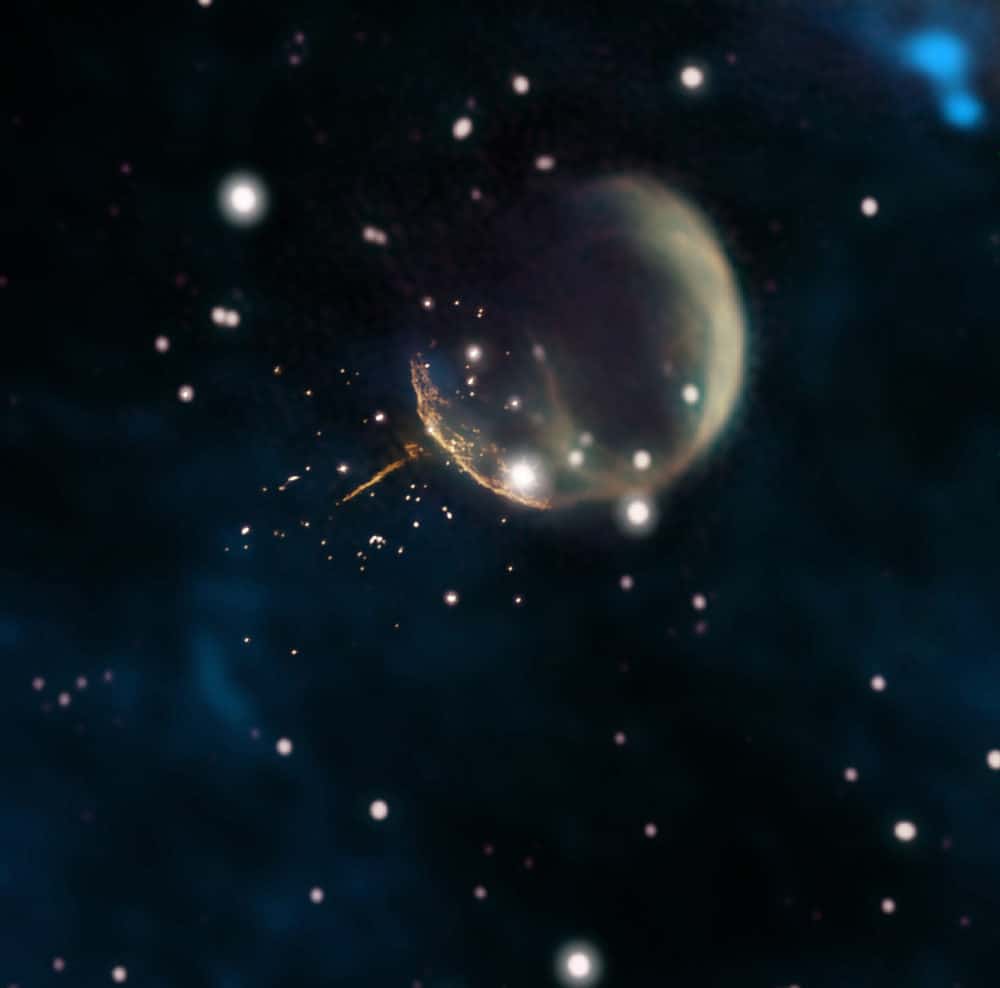The Cosmos with CTB1
Pulsars are superdense, rapidly spinning neutron stars left behind when a massive star explodes. Their rotational periods ranging from more than 10 seconds to just a few milliseconds. Since their discovery in 1967, various surveys have discovered over 2,600 pulsars. PSR J0002+6216 was discovered in 2017 by a citizen-science project called Einstein@Home. Located about 6,500 light-years away in the constellation Cassiopeia, this pulsar spins 8.7 times a second, producing a pulse of gamma rays with each rotation. “This pulsar has completely escaped the remnant of debris from the supernova explosion. It’s very rare for a pulsar to get enough of a kick for us to see this,” said Dr. Frank Schinzel, an astronomer at the National Radio Astronomy Observatory (NRAO). Radio observations with the Very Large Array clearly show PSR J0002+6216 outside the supernova remnant, with a tail of shocked particles and magnetic energy 13 light-years long behind it. The tail points back toward the center of the CTB 1 supernova remnant. “Measuring the pulsar’s motion and tracing it backwards shows that it was born at the center of the remnant, where the supernova explosion occurred. The pulsar now is 53 light-years from the center of CTB 1,” said Dr. Matthew Kerr, of the Naval Research Laboratory. “The explosion debris in the supernova remnant originally expanded faster than the pulsar’s motion,” said Dr. Dale Frail, of NRAO. “However, the debris was slowed by its encounter with the tenuous material in interstellar space, so the pulsar was able to catch up and overtake it.”
